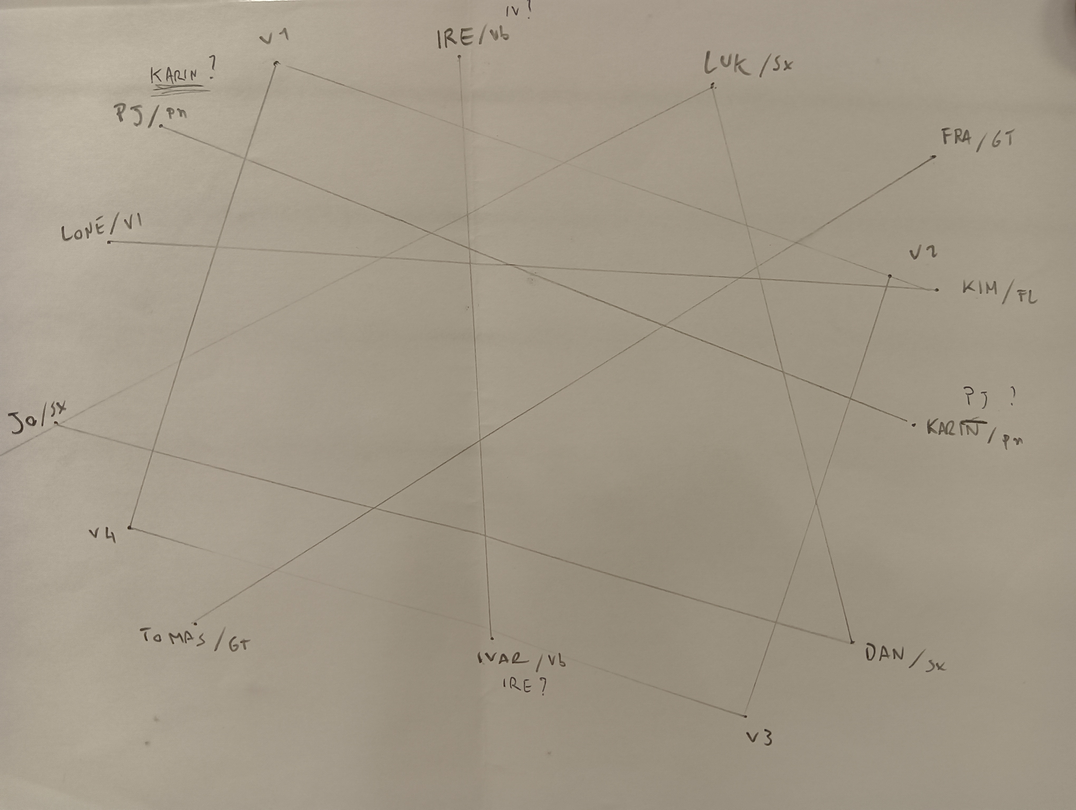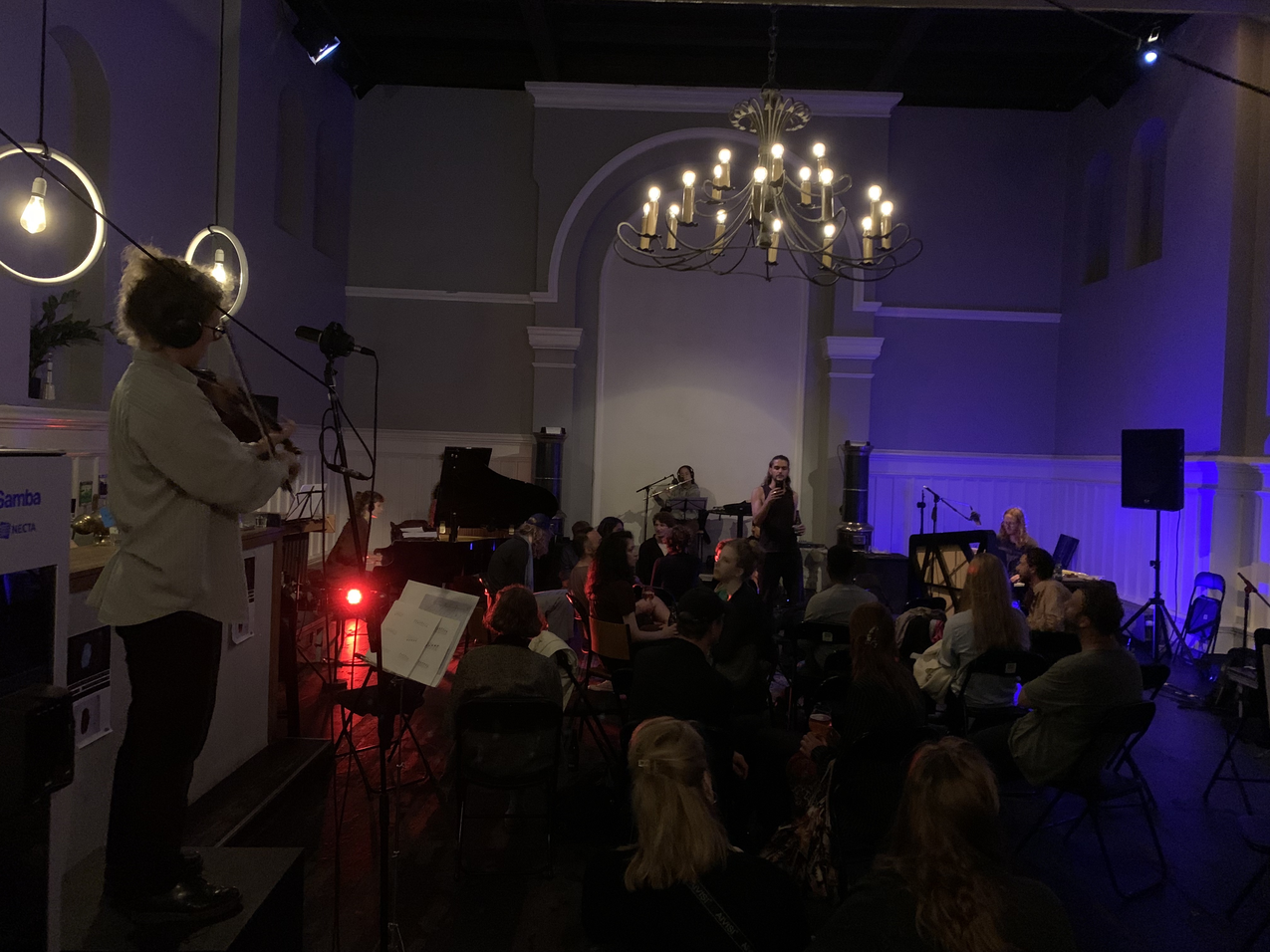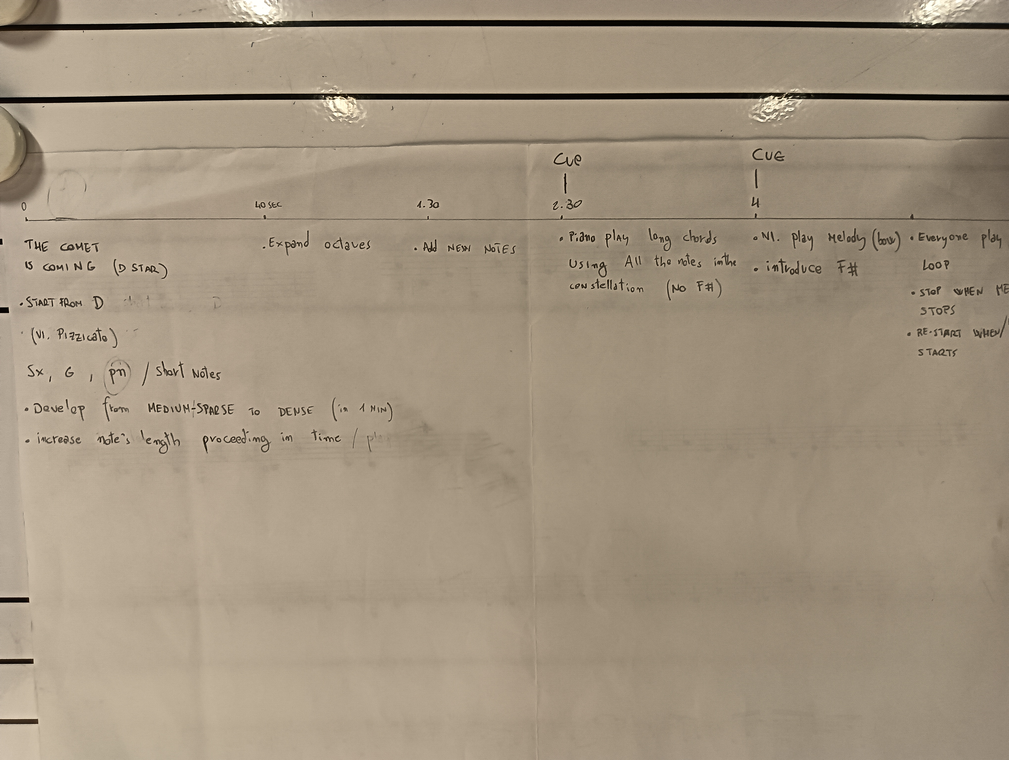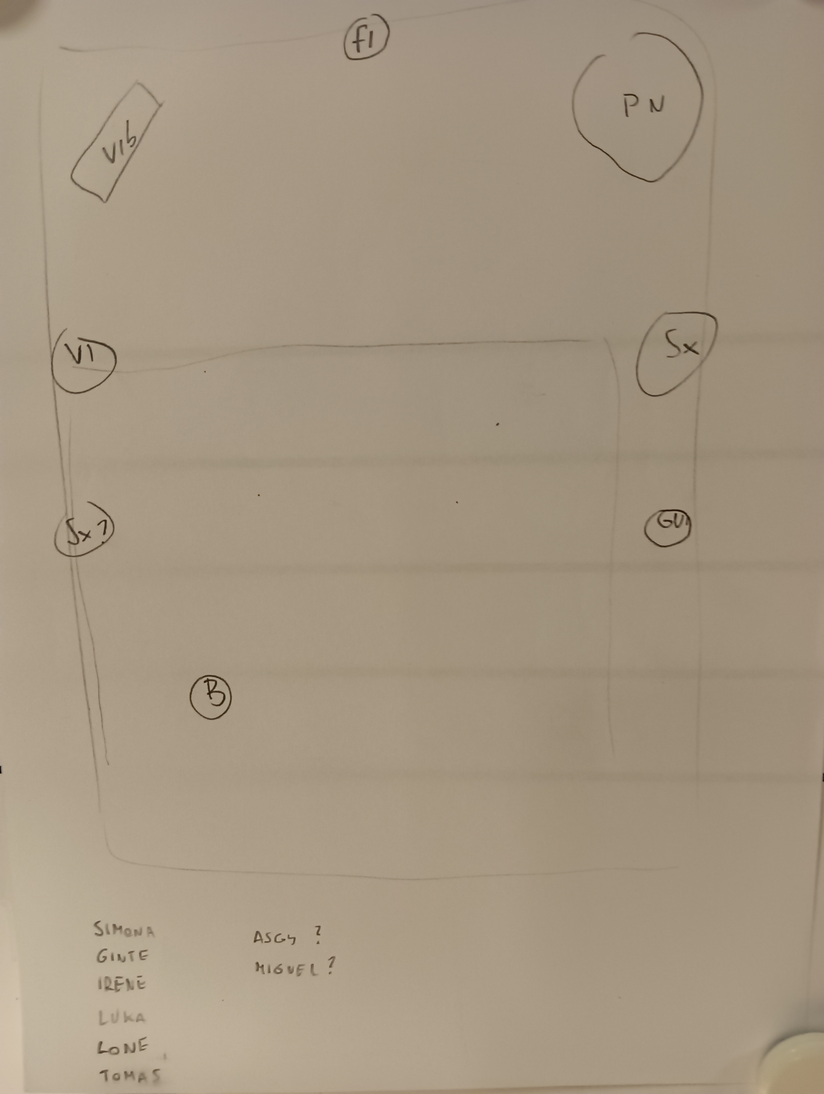The musicians who contributed to the laboratory include:
Darius Heid, Ginte PReisaite, Jacob PJ Fossum, Alex Ventling, Miguel Angel Crozzoli, Sölvi Kolbeinsson, Daniel Sousa, João Gato, Torstein Slåen, Antti Lähdesmäki, Karin Ingves, Sarvin Asa, Francesco Colocci, Lorenzo Colocci, Lone Aagot Meinich, Michaela Turcerova, Asger Thomsen, Luka Zabric, Asger Thomsen, Petter Asbjørnsen, Simona Guler, Irene Bianco, Ivar Myrset Asheim, Aurelijus Užameckis, Signe Christa Noah Andersen, Sofia Sá, Marijke Florien Maes, Susana Nunes, Mette Hommel Østerlund, Flavia Huarachi, Kim Mai Tich-Nguyen Thordsen, Marcus Wärnheim, Oscar Andreas Haug, Mark Ibsgaard Gregersen, Krzysztof Hadrych, Sarah Buchner, Ida Nørby, Rosanna Lorenzen, Jacob Kaarsberg, Laura Zöschg, Malina Midera, Jan Kadereit, Judith Parts, Tomas Gubbins
After I make some experiences with small groups of players, I finally organised meeting for a larger ensemble: most of the musicians have been participating to previous sessions, therefore they had already assimilated elements of the language, but I still needed to explain and rehearse the concepts for the new-comers, being as clear and efficient as possible;
at our first meeting I had an organic of flute, 2 tenor saxophones, 2 classic and electric guitars, 2 pianos, vibraphone, and campanula. I disposed the band in a circle around the room, placing the doubled instruments in front of each other (hard panning), I was in the centre of the room, controlling the recording and the audio pulse sent to the musicians.
I started the session with a study about entrainment, so I had them only play one tone/impulse, one after the other clockwise: at the beginning they may start with a regular pulse, having the tone constantly switching players, later increasing and decreasing the speed. At this point I would ask them to repeat the exercise irregularly, play with the different length of the space in between, collectively creating musical phrases: to facilitate this exercise I would introduce a simple pentatonic melody, and I would try the same on smaller subgroups.
At this point, assuming the participants are starting be more focus into each other sound, slowly growing a group consciousness, I would ask them to close their eyes, and repeat the study.
Then we played two “constellation”, exploring the different pulses movements and morphing between different parameters.
I give indication to the ensemble, underlining how these are completely arbitrary, and at times, the musicians suggest certain movements.
To conclude the session, we worked on the last study, de-tuning, to be played without metronomes:
1- all the players start from the same note, playing tones of length between 2 and 10 pulses (the pulse is internal)
2- slowly change the pitch minimally up or down
3- keep sliding in tuning within the half tone
4 - expand the range
5 -introduce new notes (5th)/ play again 2 and 3
6- go back to the first note
I enjoy very much the idea of the compositions being like little modules, they can be combined with each other, merge into each other, or play against each others, and the applications can be multiple and refreshing: in this way the pieces can sound radically different at every executions.
I also really like the idea of a cybernetic orchestra, an independent organism that is self-regulating, so most of the time I avoid giving cues or conducting the ensemble, but rather I want the performers to influence the rhythm of the music, so that they are in charge of the path to be taken, and to the action of one, in an immediate, intrinsic way, the reaction of the others. I believe this method is more engaging for the players, and for me it is surely more exciting, so at the moment I am designing cards of parameters, to fill and distribute to the musicians, in order to randomly test different combinations, aiming for more interaction and engagement from the participants.
CHECK THE SCORES AND MORE MUSIC HERE!







